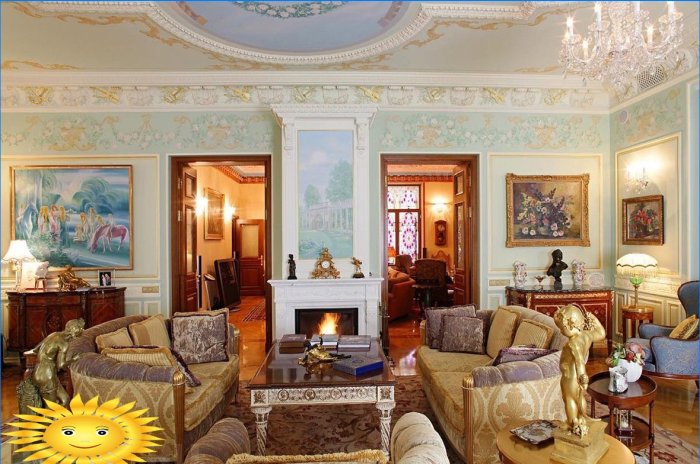
The artist Stanislav Zhukovsky is known for his paintings, in which he lovingly depicted old Russian estates. His paintings can be used to study the interiors of houses from the mid-19th to the early 20th century..
 S. Yu. Zhukovsky. Poetry of an old noble house, 1912
S. Yu. Zhukovsky. Poetry of an old noble house, 1912
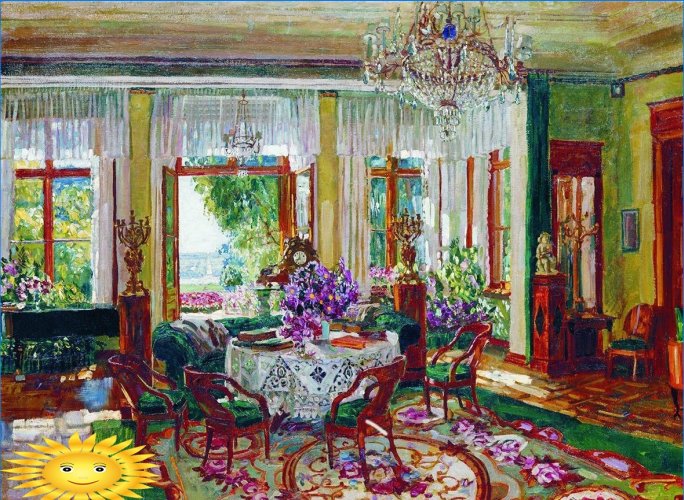 S. Yu. Zhukovsky. Large living room in Brasov, 1916
S. Yu. Zhukovsky. Large living room in Brasov, 1916
 S. Yu. Zhukovsky. Interior of the manor house library, 1910
S. Yu. Zhukovsky. Interior of the manor house library, 1910
Let us immediately decide what we are going to talk about specifically about estates, not huts, towers and princely palaces. A lot has been said about the huts and towers, this is also history, and more ancient. And only few can afford to repeat the luxury and royal style of the palaces of Russian princes. And who dares to reproduce such a style – in modern realities it is difficult to imagine.
Russian terem, as a place of residence for fairly well-to-do families, can now be found mainly in ancient cities and villages. Carved platbands, wood as the main material, four small rooms around a solid stove, a veranda – these are the main differences of such a structure.
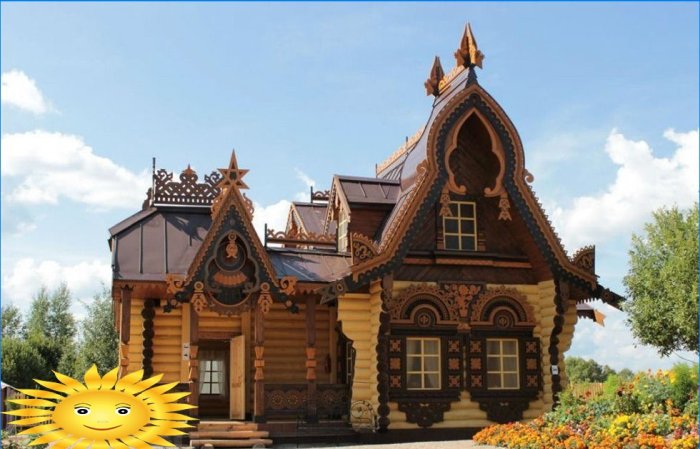
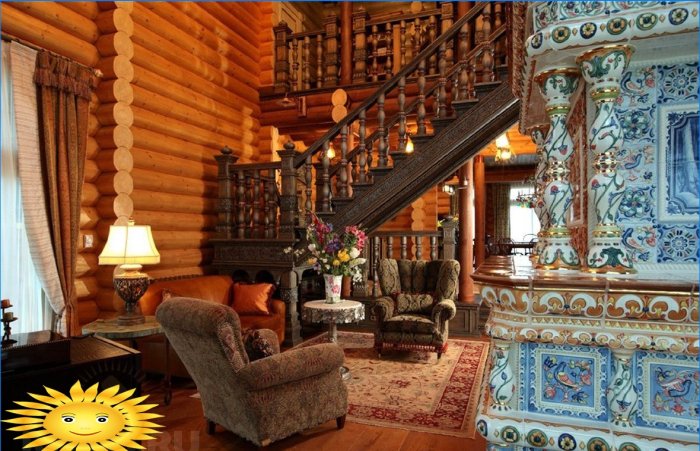
The interior of the Russian hut can now be found in baths, sometimes people who are fond of antiquity build dachas this way. Everything here is simple, rustic, without frills and unnecessary details.
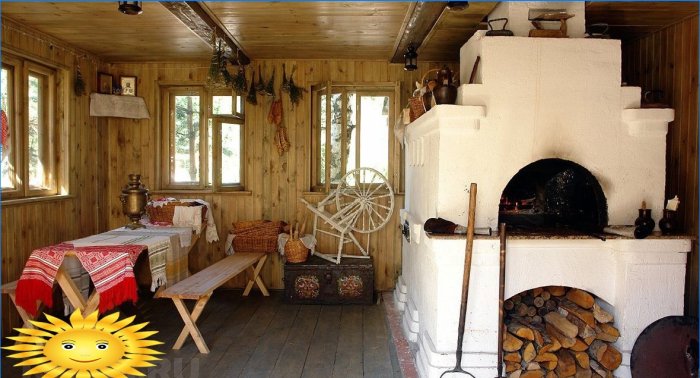
So, having sorted out a little with the towers and huts, we go directly to the estate. This name comes from “plant” or “plant”. A manor house is traditionally understood as a suburban building, a whole complex, which, in addition to the residential building itself, includes outbuildings and an extensive garden. It is customary to distinguish between the following types of estates:
- Boyar or merchant estates that began to appear in the 17th century.
- Manor estates, which remained the main place of residence of wealthy Russians until the beginning of the 20th century, and gained particular popularity in the 19th century.
Baron Nikolai Wrangel (brother of Peter Wrangel, the leader of the White movement) in 1902 went to the province to study in detail the features of the estates of the then landowners. This is how he described the traditional estate in his book: “White houses with columns, in a shady thicket of trees; sleepy mud-smelling ponds with white silhouettes of swans plowing the summer water … “.
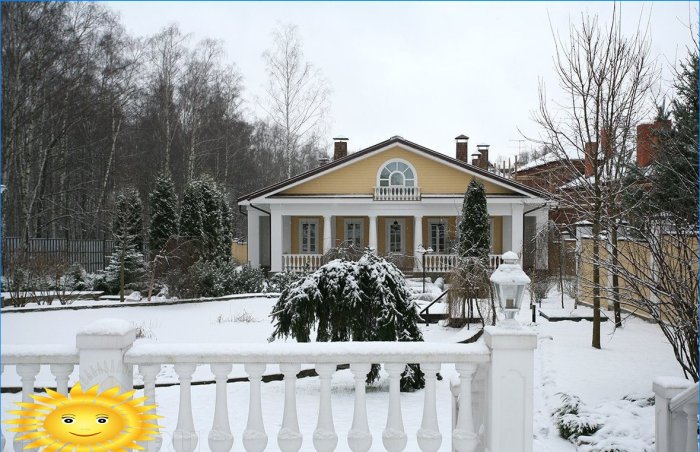
A white or sometimes blue house in a classical style, columns with Corinthian orders, a maximum of two floors, a wide porch or terrace – this appearance of a Russian estate is not outdated even now.
This photo shows the Galskikh estate located in Cherepovets. Now it is a house-museum that tells about the life of landowners of the early 19th century.

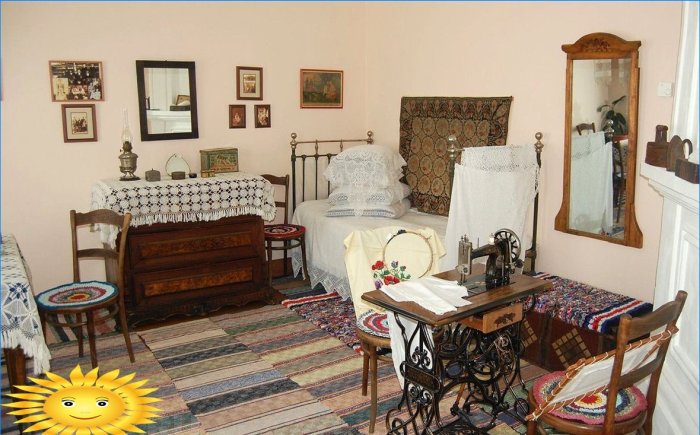
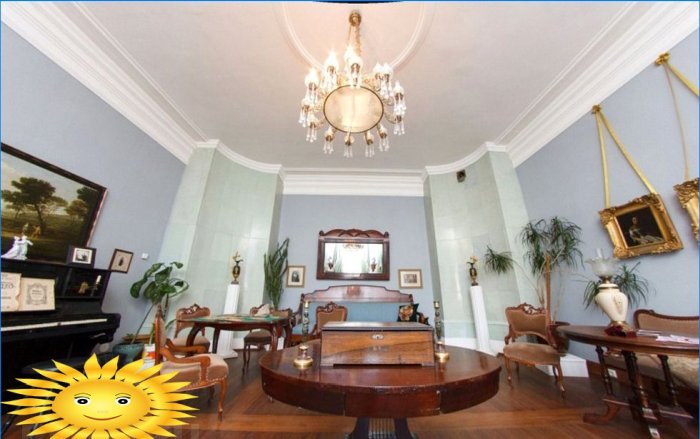

As for the interior of Russian estates, one should distinguish the merchant style from the later one, created under the influence of European, mainly French trends and close to modern realities..
These pictures show the house of the merchant Klepikov, located in Surgut. You can clearly see the abundance of textiles, very simple decoration, plank floors, solid wooden furniture. We are sure that many of you have found such a metal bed with springs at your grandmother’s in the village. Let us turn again to Baron Wrangel, who described the interior of the estate as follows: “Inside, in the rooms, there are decorous comfortable chairs and armchairs, friendly round tables, ragged endless sofas, wheezing clocks with a rusty bass sound, and chandeliers, and candlesticks, and sonnets, and screens, and screens, and tubes, tubes to infinity “.

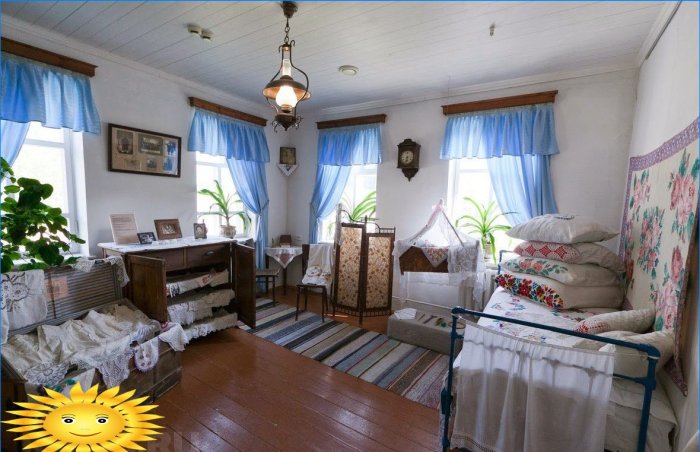
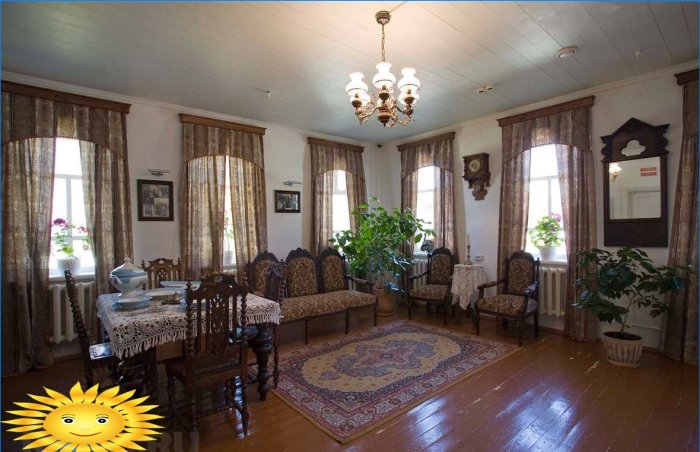
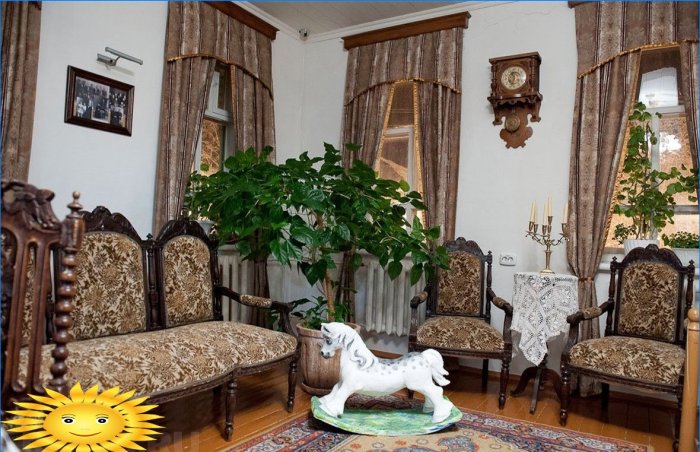
The furniture in such a manor was often motley – an old chest, inherited from a grandfather, could be adjacent to a modern French chair or an English chair, which the owner of the house, at the whim of his wife, acquired during a trip to the city. Traditionally, in the Russian estate there was a hall for receiving guests and, if the size of the house allowed, balls, as well as an office that became the owner’s man’s refuge.
This photo shows the interior of the estate, built in the village of Mednoe Lake (near St. Petersburg) by architects Elena Barykina and Slava Valoven for collectors of antique furniture. Almost all of the furnishings are authentic, but this house also has modern replicas created “antique”.
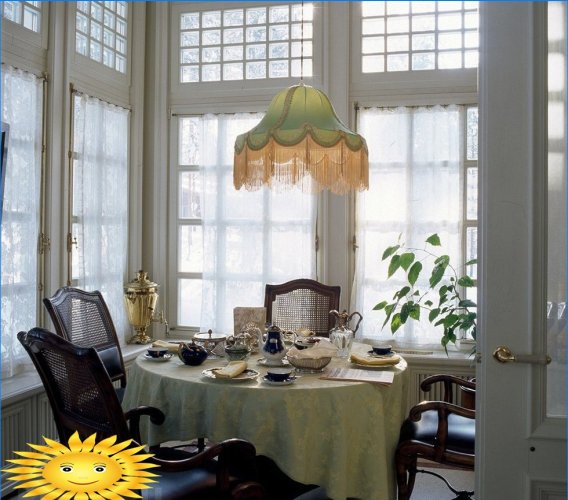
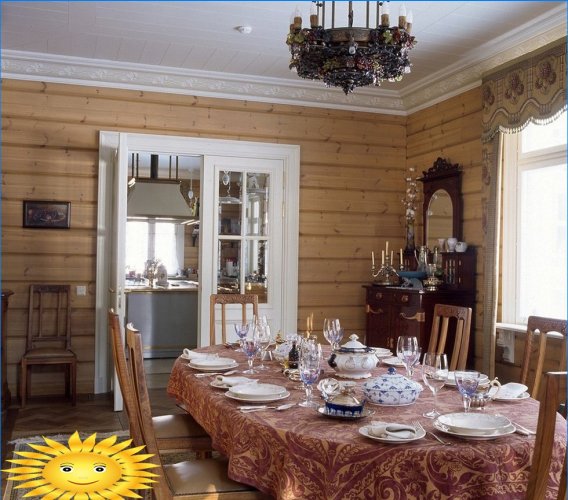
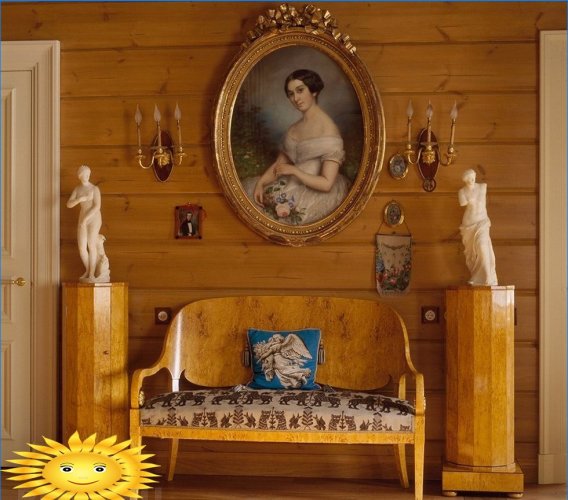

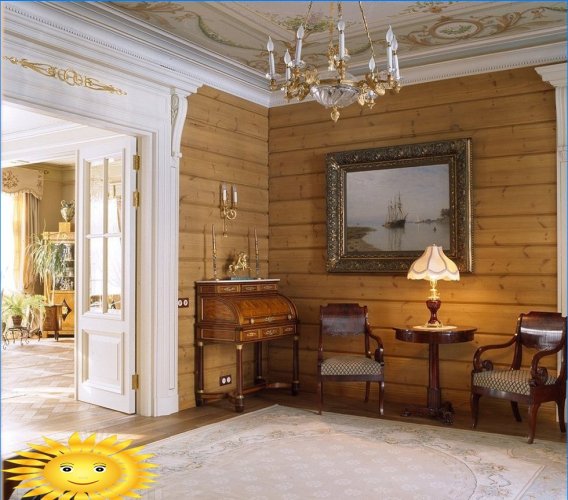
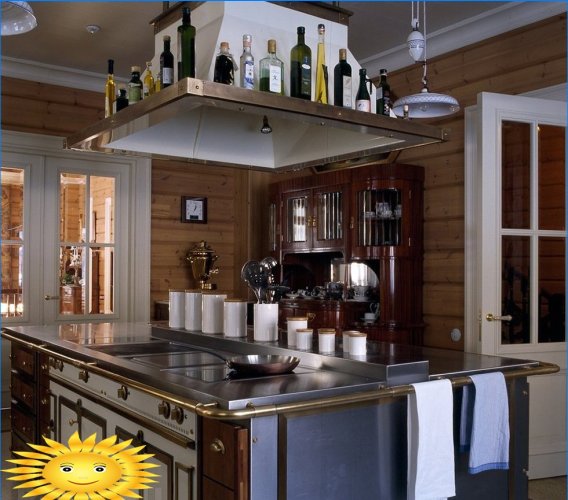

If you want to recreate the interior of a Russian estate in your home, you should adhere to the following principles:
- An obligatory element will be a wooden floor, you can parquet or from boards.
- The furniture is laconic, preferably made of dark wood, with thin legs.
- White interior doors and skirting boards.
- The walls can also be wooden, painted in neutral shades (but better – snow white). You can also use antique wallpaper that mimics textiles..
- Round or oval tables, with beautiful tablecloths, lamps with cozy lampshades and light curtains.

As for the kitchen and bathroom, it is advisable to use tiles here. The doors of kitchen cabinets can be left wooden or painted under Gzhel, as in our example.
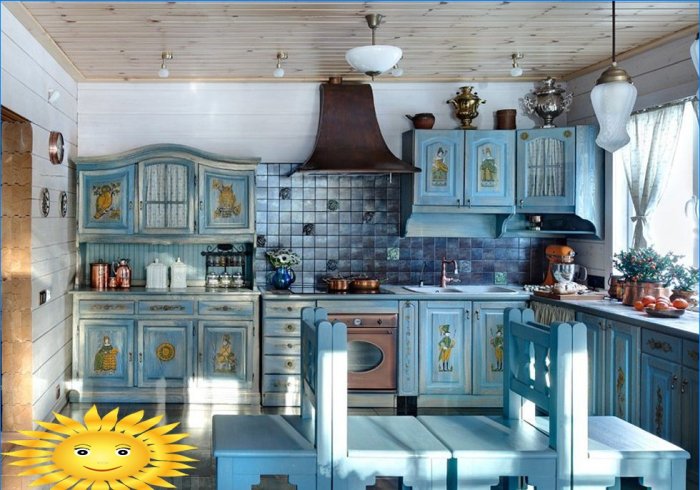
Separately, mention should be made of the influence that the Empire style or late classicism, which came from Europe, had on the interior of the Russian estate. Within the framework of the landowner’s estate, this trend was called “rural empire”, becoming less pompous and luxurious.
Now, some homeowners imagine the style of the Russian estate as a kind of mixture of a hut, country, chalet, rustic and modern motives..
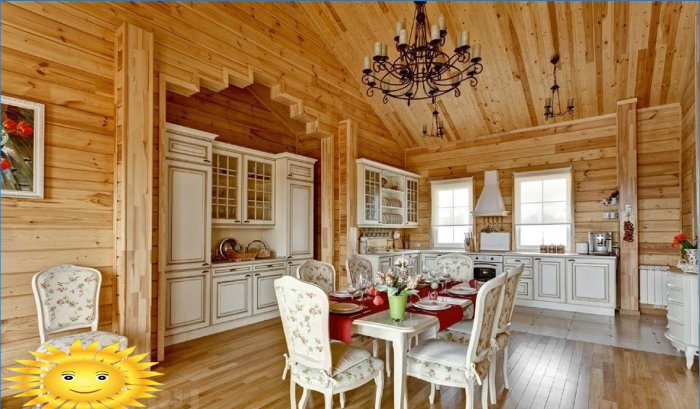
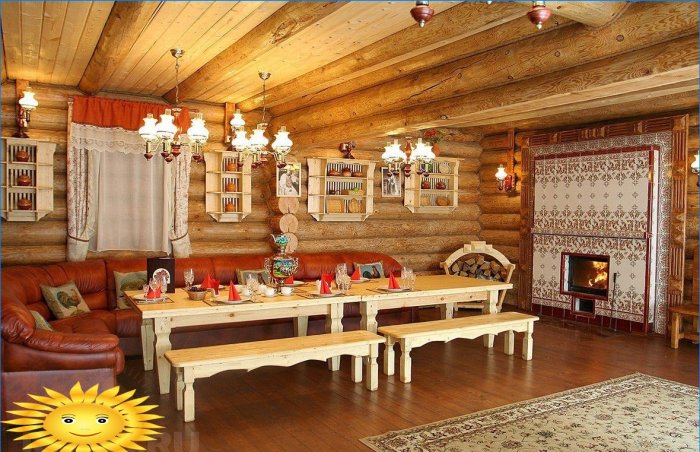
Well, the style of the Russian estate has always been a kind of mixture of different directions, taking a lot from the classics and history of our country. However, if you adhere to the main canons, in the end you should get a light interior, not overloaded with furniture, cozy, fresh, quite simple and at the same time really homely, a real Chekhov’s dacha, more than once described by the classics of Russian literature.

What are the distinguishing features of a Russian estate in terms of its architectural style, interior design, and how has it evolved over time? How has the historical significance of these estates influenced their current interpretations in modern times?
What are some distinctive style elements and interior designs commonly found in Russian estates? How has the history of these estates influenced their current interpretations and modern designs?
What are some notable features of the Russian estate in terms of its style and interior design? How has the history of the estate influenced its modern interpretations and adaptations?